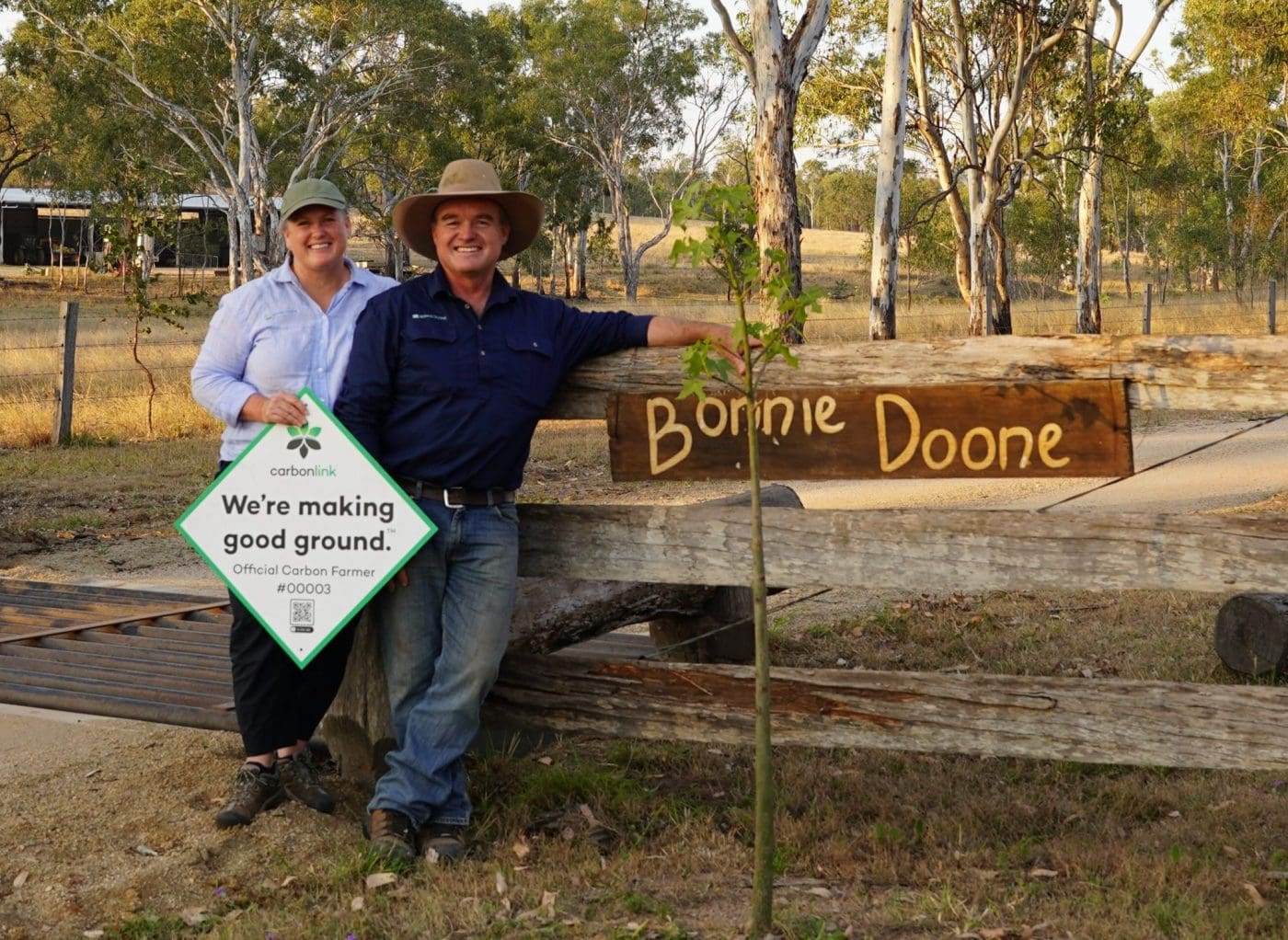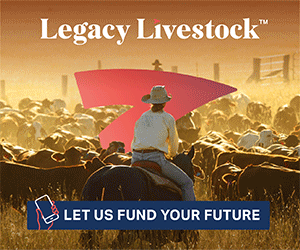
Carly and Grant Burnham have become the latest to be issued soil carbon credits, with a record 94,666 Australian Carbon Credit Units. Photo: supplied
This is the first of a series stories on AgCarbon Central profiling producers of all sizes doing interesting work with carbon and other environmental factors. Today’s story is with Australia’s largest holder of soil carbon credits.
As Grant and Carly Burnham work out what to do with the 94,666 soil carbon credits they were issued last month, they are hoping their experience can be the catalyst for some important discussions the cattle industry needs to have.
The Burnham’s Bonnie Doone Beef, near Monto in Central Queensland, is now Australia’s largest holder of soil carbon credits.
AgCarbon Central spoke to Carly Baker-Burnham to take a deep dive into the project, discuss the future of carbon trading in agriculture and address some concerns recently raised by a group of scientists.
Monetising credits a big decision
The next step for Bonnie Doone is to work out how they are going to distribute their carbon credits.
Ms Baker-Burnham said some of the credits will go towards making their own operation carbon neutral – and they could become the first beef brand in Australia to be carbon neutral without buying credits.
She said there had been plenty of interest since last month’s announcement.
“We are getting emails every day from people wanting to trade or buy our credits, we are learning a lot about commodity trading and corporate ESG policies (environmental, social and corporate governance). This is something I would implore other farmers to do,” Mrs Baker-Burnham said.
 “There is a great responsibility we have to make a good choice with what we are doing with our ACCUs.”
“There is a great responsibility we have to make a good choice with what we are doing with our ACCUs.”
Mrs Baker-Burnham said the family was hoping to sell the surplus credits to a buyer who fits in with Bonnie Doone’s business philosophy.
“Our intention is to partner with an organisation or a company that is doing some good to genuinely reduce emissions that is either connected to rural and regional Australia or the food supply chain”
“This is something we are committed to for 25 years and we are only seven years into it, so it is still early days and we are still learning a lot about it.”
What is involved in the soil carbon project?
The 8000ha (20,000ac) organic certified property has had an ecological focus for more than 20 years, which is used in the marketing of a beef box business and tourism venture.
“Our focus over the last decades has been to come closer to pasture and soil, knowing that nurturing the environment provides more production benefits for our beef grazing business,” Ms Baker-Burnham said.
With the development of soil carbon farming fitting in with those principals, the Burnhams signed up to a project with Australia’s Clean Energy Regulator in 2016 – which included taking a baseline measurement of soil carbon levels through more than 300 core samples to 1.2m.
“There was a lot of uncertainty about whether there was a carbon market at the time,” she said.
“But the reason we signed up was because we could see that where we had managed well, the soil and pastures were improving. We really wanted to better understand through research and measuring the soil to see what was happening.
“The carbon market has really solidified since we started, it is a tradeable commodity now and we feel quite lucky for that.”
Proving a change of practice
Additionality is one of the underpinning principles of the carbon market and means that a change from “business-as-usual” is required for someone to be issued credits. In the case of soil carbon, there are a series of practice changes producers can make to fulfil the additionality component.
Mrs Baker-Burhnam said Bonnie Doone had spent more than $1m to make practice changes for the project.
“It was about rotating our cattle and resting pastures more often, which meant we had to build a lot more fences and put in a lot more waters to get cattle moving more frequently,” she said.
“What that was doing was increasing the carbon cycle through the photosynthesis of the grass when it was rested.”
The Burnhams measured an increase of more than 126,000T of carbon in their soil since the project started. Deductions were made by the CER to account for the possibility a decrease in soil carbon levels over the next 20 years.
Bonnie Doone’s project was then the subject of five CER audits before it was issued ACCUs – which included a visit to the property from two of the auditors.
“It was quite a high-level audit – we had to provide receipts, invoices, photographic evidence and when the auditor came to our property we had to show them our development, our planning and how we do it,” Mrs Baker-Burnham said.
“It is not for the faint hearted, you really have to be committed to demonstrating a practice change and you need to keep good records.”
Scientists welcome at Bonnie Doone
Bonnie Doone was one of three soil carbon projects, run by CarbonLink, to be issued large numbers of Australian Carbon Credit Units in recent months – in what had been described as a gamechanger for the developing soil carbon industry.
A mixed response has followed the issuances, with some, including a group scientists, raising concerns about the approach the government has taken with soil carbon.
Mrs Baker-Burnham said she was keen to work through some of the reservations expressed about soil carbon.
“I am happy to have those scientists to come and visit us and help us understand their reservations to this part of the industry,” Ms Baker-Burnham said.
“If the soil carbon industry and these scientists can come together a bit more, I think it will help us make better choices. This is a relatively new concept for agriculture and we need to accept all points of view.”
Should producers be paid for soil carbon increases?
Mrs Baker-Burnham was asked whether producers should be paid for increases in soil carbon – with the projects now worth millions-of-dollars. She said the monetary incentive was a good approach, but the industry needed to think about who it was trading with.
“As land stewards, we have an opportunity to do practices that are going to enhance the environment and draw greenhouse gases out of the atmosphere,” she said.
“We have a solution to one of the world’s biggest problems and we need a large-scale uptake of these types of practices – so, I think it is ok to pay farmers for soil carbon.
“But as an industry we need to think about how trade our ACCUs and make ethical and wise choices in relation to industry and government climate targets.”
Mrs Baker-Burnham said large investments and a certain amount of risk was taken to do soil carbon projects, which also needed to be noted.
“Although there is productivity benefits and a better environment – having ACCUs to trade is a fitting reward to justify that investment,” she said.
“It is a win-win, because it creates more resilient agriculture businesses and rewards people who are doing good things for the planet.”
- Please comment any suggestions you may have for this series. Next we will be profiling Salisbury Plains, which is attempting Australia’s most northern soil carbon project.



HAVE YOUR SAY